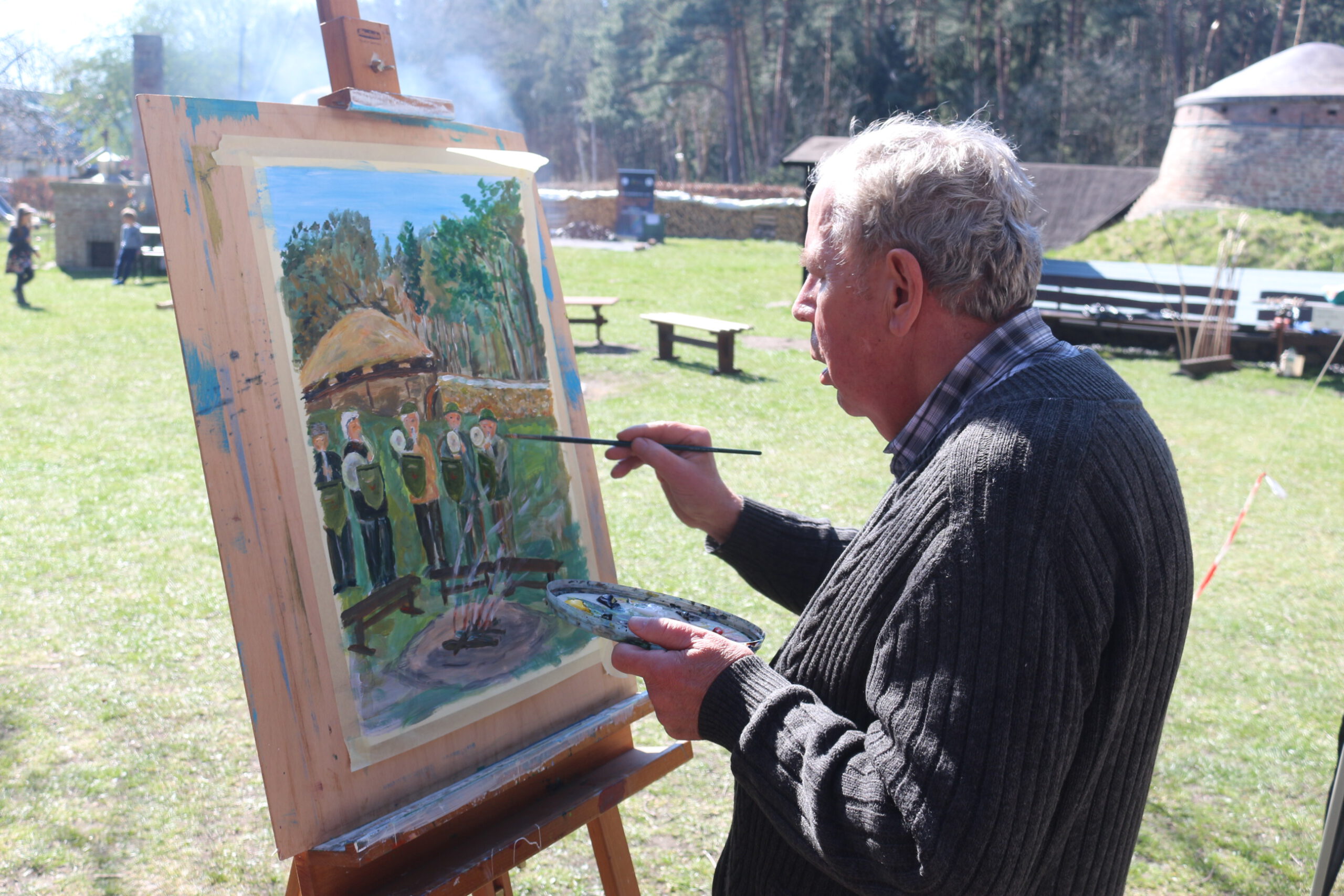Saphenion®Rostock: Gefäßmedizin in der Kunst
Vascular medicine in the mirror of art
Saphenion®Rostock: Gefäßmedizin in der Kunst – Die außerordentliche Bedeutung der Heilkunst und Heilkunde für die Menschen spiegelt sich in der ungeheuren Fülle künstlerischer Zeugnisse wider, die sich von der Vorgeschichte an in allen Kulturen der Welt finden.
Wandmalereien, Statuetten, Skizzen, Dokumente aus allen Regionen – aus vorgeschichtlichen Höhlen, das alte Ägypten, China, Kreta und Mykene, Alexandria, Griechenland und Rom, Indien und Südamerika – belegen bemerkenswerte und wachsende Kenntnisse von verschiedensten Krankheiten, ihren Ursachen, Symptomen und ihrer Heilung.
Gefäßmedizin im Spiegel der Kunst – Auch die Gefäßmedizin spiegelte sich in der Kunst wider. Man wird zwar auf Internetsuchmaschinen nicht so recht fündig. Jedoch gibt es einige recht dicke Bücher, die zum Thema Medizin im Spiegel der Kunst umfassend ausführen. Und wenn man sich die Mühe macht, die Gemälde, Zeichnungen, Skulpturen, Bronzestatuen usw. genauer zu analysieren, fallen auch Themen zur Gefäßmedizin ins Auge.
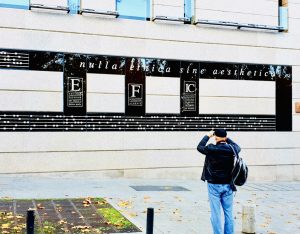
Saphenion®Rostock: Gefäßmedizin in der Kunst – Nulla Ethica sine Aesthetica
Der ärztliche Beruf im Allgemeinen und der des Gefäßmediziners im Besonderen wird regelmäßig mit gegensätzlichen Forderungen aus verschiedenen Lagern konfrontiert. Vom Arzt erwartet man, dass er verständnisvoll auf die Bedürfnisse der Patienten eingeht. Dem Kranken mehr und mehr Zeit widmen und gleichzeitig seine Kenntnisse und Kunstfertigkeit ständig zu verbessern. Gleichzeitig stellt man den Arzt als Händler, als Gewerbetreibenden in Sachen Gesundheit und als Medizinunternehmer dar. Der unter Zeitdruck die Untersuchungen abkürzt, den Preis seiner Waren annonciert und seine Leistung der Prüfung von Laien unterwirft. (Albert S. Lyons).
Jedoch ist die medizinische Ethik von vielen verschiedenen Einflüssen abhängig. Philosophie, Geschichte, Kunst prägen die Ethik des Berufsstandes von jeher.
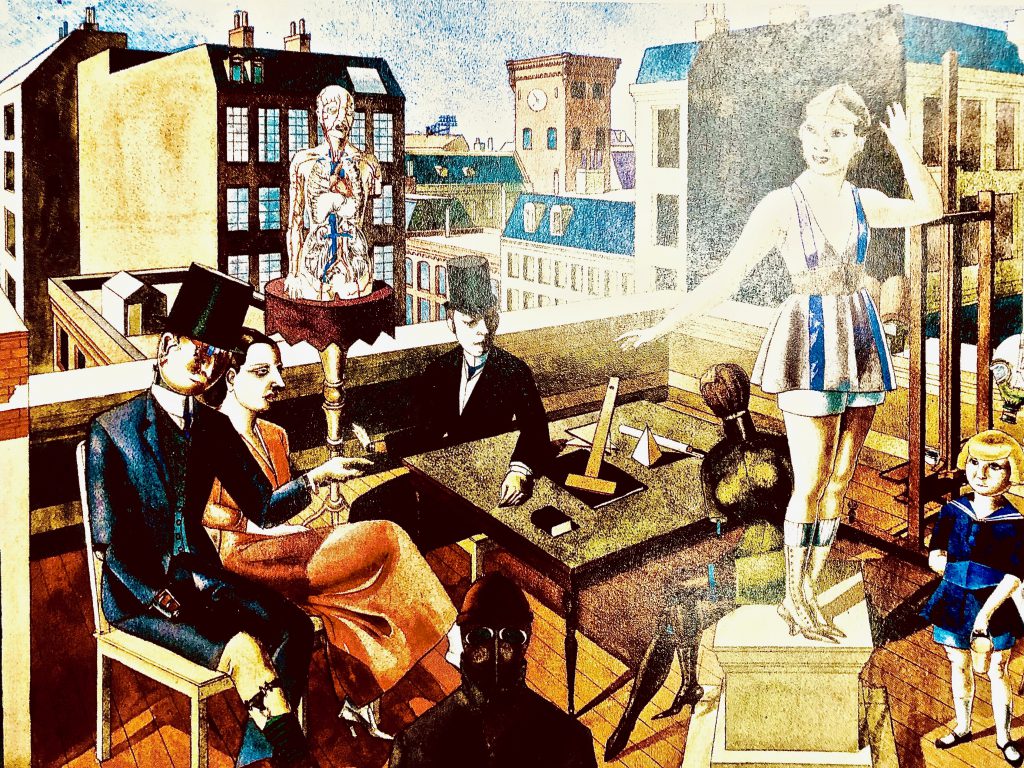
Saphenion – Gefäßmedizin in der Kunst, George Grosz, 1920
Saphenion – Vascular medicine in the mirror of art, George Grosz, 1920
Vascular medicine in the mirror of art
The extraordinary importance of medicine and medicine for people is reflected in the enormous abundance of artistic evidence that has been found in prehistory in all cultures of the world.
Murals, statuettes, sketches, and documents from all regions – from prehistoric caves, ancient Egypt, China, Crete and Mycenae, Alexandria, Greece and Rome, India, and South America – demonstrate remarkable and growing knowledge of various diseases, their causes, symptoms, and their Cure.
In this interwoven relationship between history, philosophy, art, and medicine, vascular medicine has only become a player relatively late. Nevertheless, the dependencies on different camps and different philosophies are also reflected in this discipline. Vascular surgery did not begin until the beginning of the 20th century, and venous medicine began to appear in the medical market. And yet vascular medicine is not just a cure, not just a discipline.
Vascular medicine reflected in art – Vascular medicine was also reflected in art. You won’t find anything on Internet search engines. However, there are some quite thick books that explain medicine extensively in the mirror of art. If you take the trouble to analyze the paintings, drawings, sculptures, bronze statues, etc., you will also notice topics related to vascular medicine.
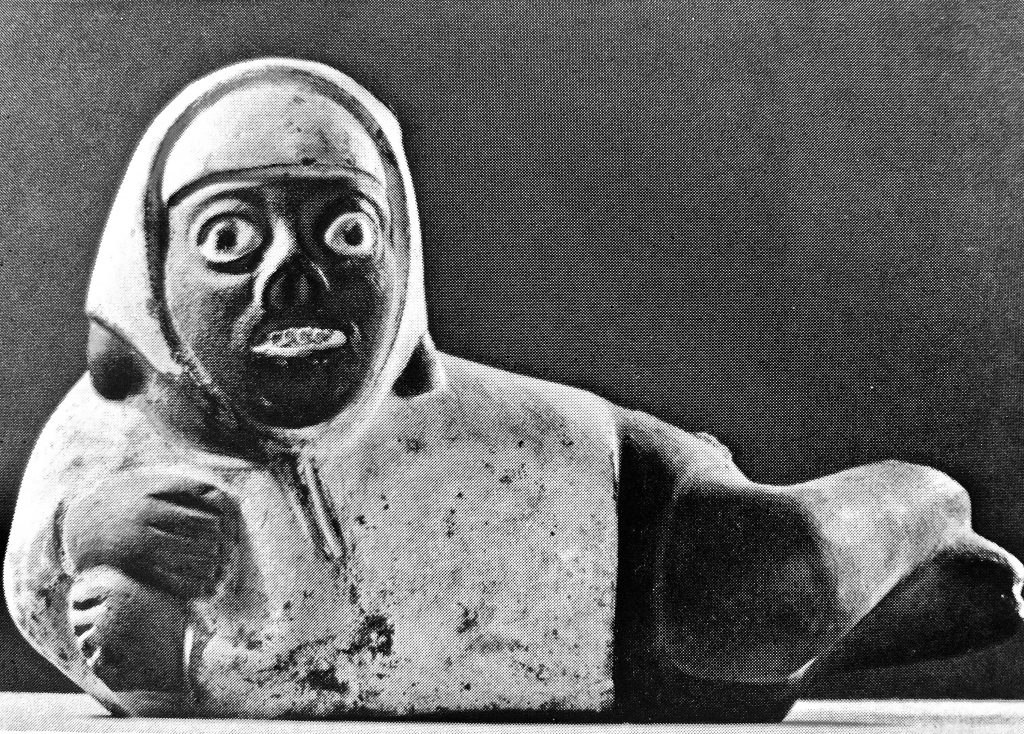
Saphenion-Mann mit Amputation beider Füsse, Museum für Völkerkunde
Saphenion – Man with amputation of both feet, Museum of Ethnology
Vascular medicine in the mirror of art – Nulla Ethica sine aesthetics
The medical profession in general and vascular medicine, in particular, is regularly confronted with conflicting demands from various camps. The doctor is expected to understand the patient’s needs in an understanding manner. Devote more and more time to the patient and at the same time constantly improve his knowledge and craftsmanship. At the same time, the doctor is portrayed as a trader, a healthcare professional, and a medical entrepreneur. Under time pressure, he abbreviates the examinations, advertises the price of his goods, and subjects his performance to the layperson’s examination. (Albert S. Lyons).
However, medical ethics depend on many different influences. Philosophy, history, and art have always shaped the ethics of the profession.
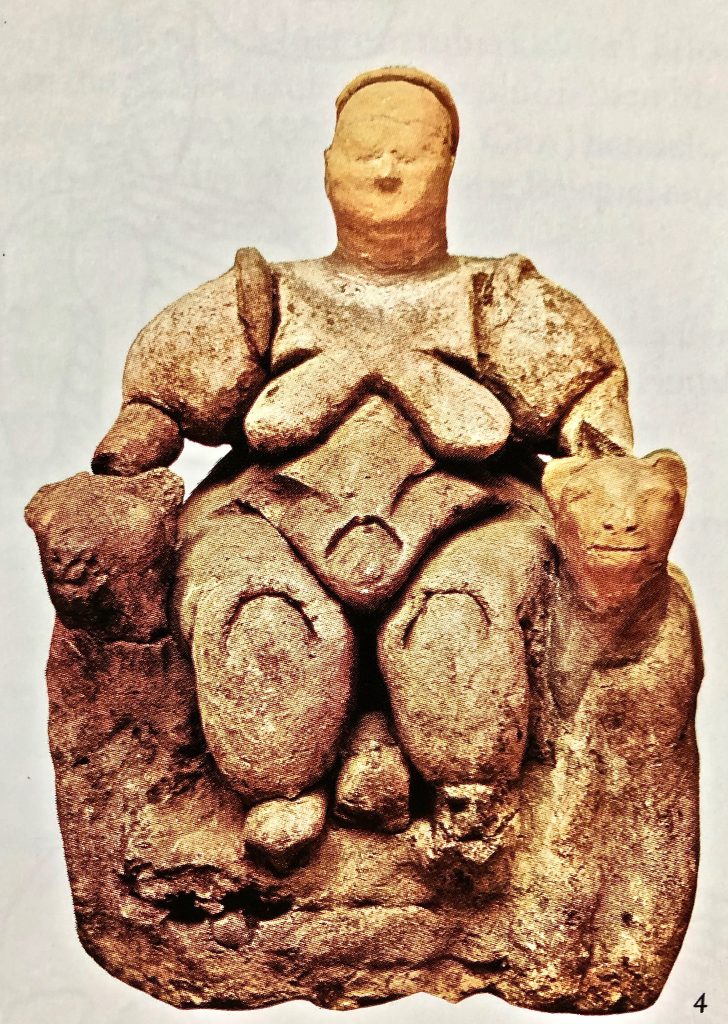
Saphenion – Göttin mit Lymph-Lip-Phlebödem, 6500 v. Chr.
Saphenion – goddess with lymph-lip – phlebedema, 6500 BC Chr.
Saphenion®Rostock: Gefäßmedizin in der Kunst – Medizin nicht nur Heilmittel, Heilen nicht nur Disziplin
Medizin stand und steht zu allen Zeiten im Wechselverhältnis zur Gesellschaft, aber das Können des Arztes hängt viel mehr von den Fähigkeiten und Qualitäten, von seiner ethisch-sozialen Grundeinstellung ab, als von einer Philosophie oder Gesellschaftsform.
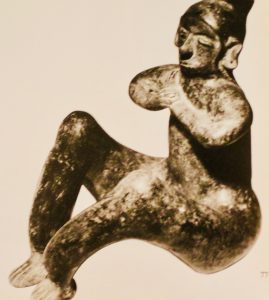
Sitzende weibliche Figur mit Zeichen eines Lymphödems, 200 v. Chr.
Seated female figure with signs of lymphedema, 200 BC.
Gefäßmedizin ist in dieser Verwobenheit zwischen Geschichte, Philosophie, Kunst und Medizin erst vergleichsweise spät zum Akteur geworden. Gleichwohl spiegeln sich auch in dieser Disziplin die Abhängigkeiten von verschiedenen Lagern, von verschiedenen Philosophien wieder. Erst zu Beginn des 20 Jahrhunderts begann die Gefäßchirurgie, begann die Venenheilkunde auf dem Medizinmarkt. Und gleichwohl ist auch die Gefäßmedizin nicht nur ein Heilmittel, nicht nur eine Disziplin.
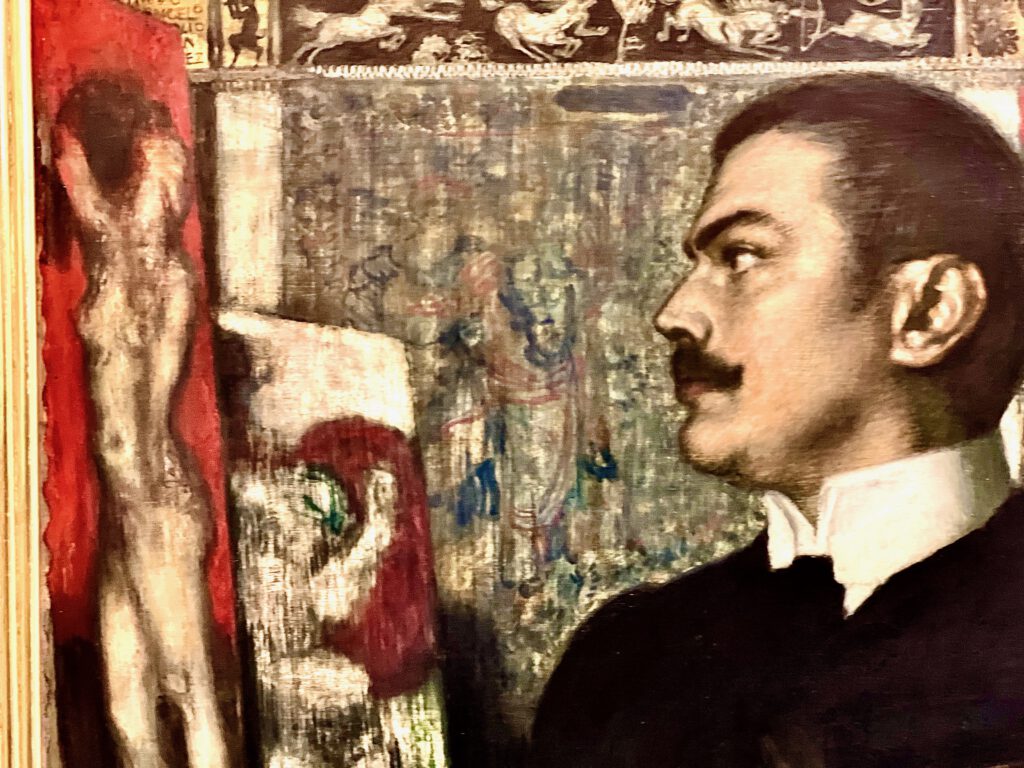
Vascular medicine in the mirror of art – medicine not only remedies, healing not only discipline
Medicine has always been concerning to society at all times, but the doctor’s ability depends much more on the skills and qualities, of his ethical-social basic attitude than on the philosophy or social form.
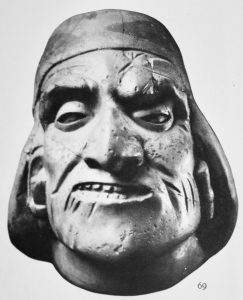
Darstellung eines Gesichtes mit einseitiger Lähmung nach einem Schlaganfall – Arterienverschluss? Embolie?
Visualization of a face with unilateral paralysis after a stroke – arterial occlusion? Embolism?
In this interwoven relationship between history, philosophy, art, and medicine, vascular medicine has only become a player relatively late. Nevertheless, the dependencies on different camps and different philosophies are also reflected in this discipline. Vascular surgery did not begin until the beginning of the 20th century, and venous medicine began to appear in the medical market. And yet vascular medicine is not just a cure, not just a discipline.
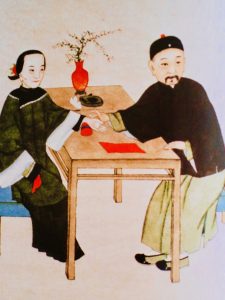
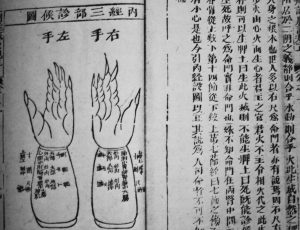
Altchinesische Medizin: Arzt untersucht Patientin durch Pulstasten (li.), Pulstabelle zur Diagnosik innerer Organe – 1693 (re.).
Ancient Chinese medicine: The doctor examines the patient using pulse buttons (left), and a pulse table for diagnosis of internal organs – 1693 (right).
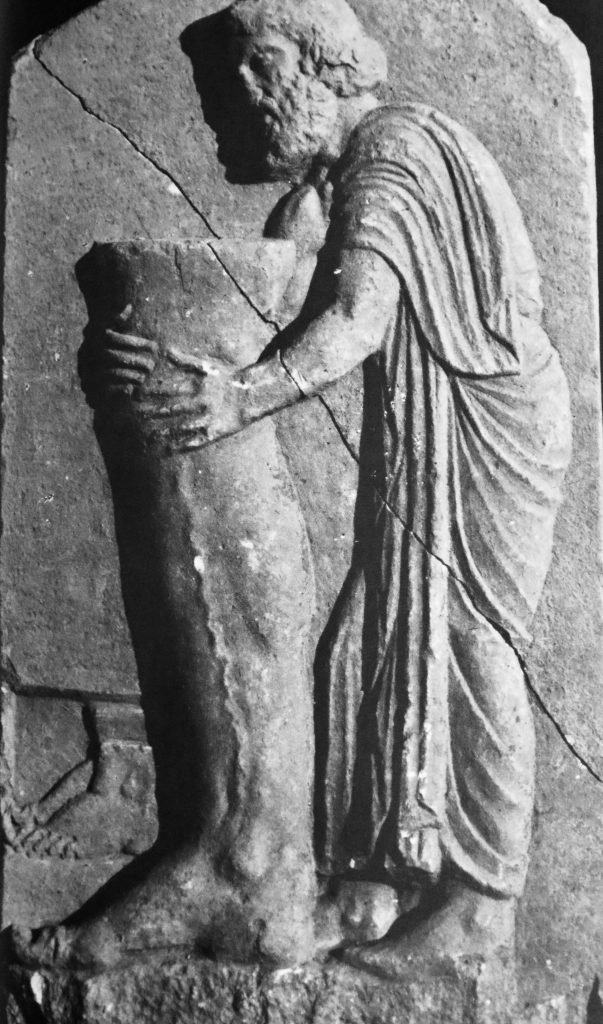
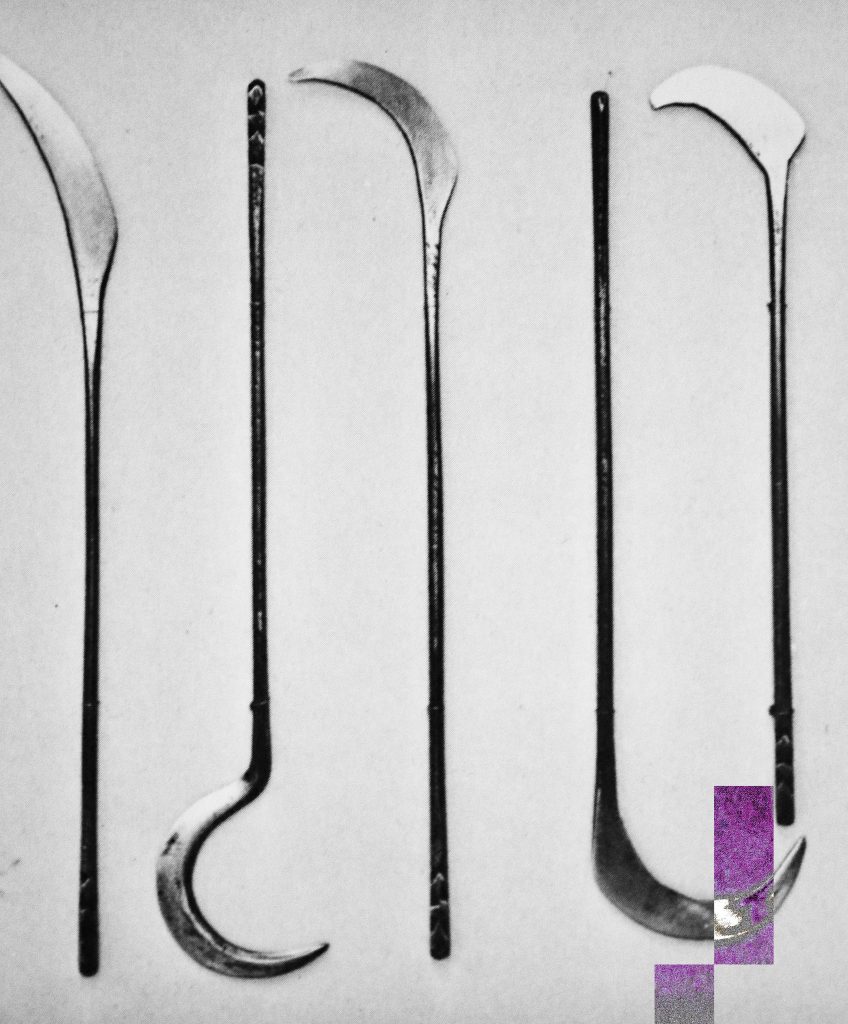
Stählerne Skalpelle zur Krampfader – Op (1860, li.), Asklepios – Dank für eine Krampfaderheilung (290 v.Chr.)
Steel scalpels for the varicose vein -Op (1860, left), Asklepios – thanks for a varicose vein healing (290 BC, right)
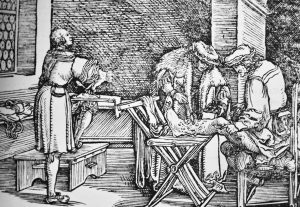
Behandlung von Beingeschwüren, Ulcera crures (1572);
Treatment of leg ulcers, ulcera crures (1572);
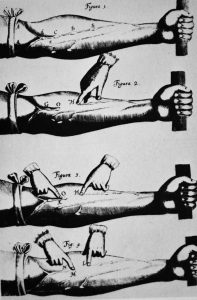
De Motu Cordis – Holzschnitte, mit denen William Harvey den Blutkreislauf erklärte (1628).
De Motu Cordis – Woodcuts that William Harvey used to explain the bloodstream (1628).
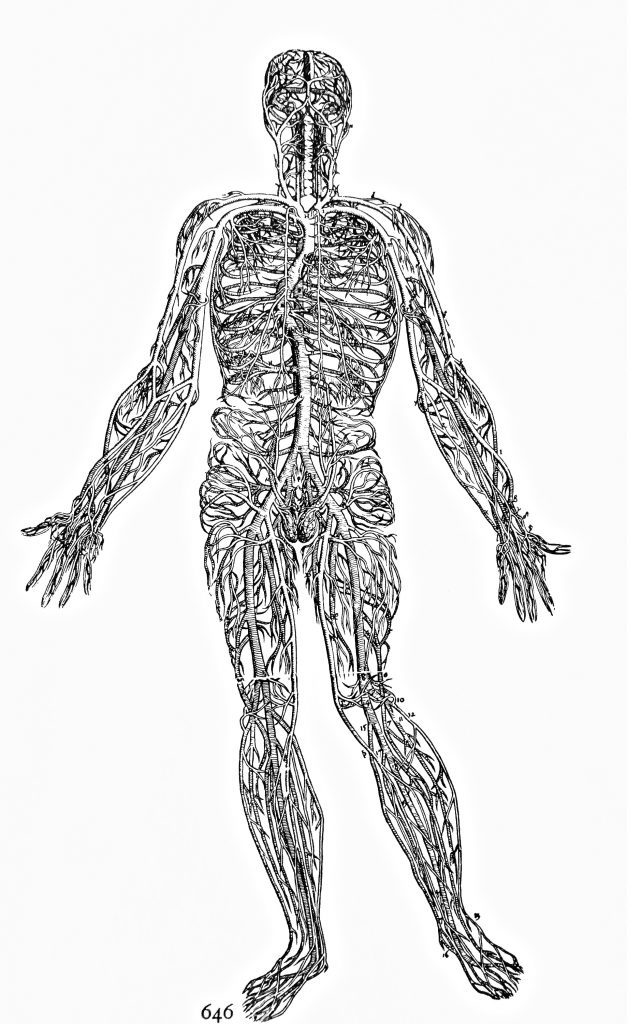
Der Venenkreislauf mit Darstellung der Brust -/ Bauch- / Becken- / Beinvenen
Leonardo da Vinci: Kreislauf der Vena cava (um 1500).
The venous circulation with representation of the chest/belly/pelvis/leg veins Leonardo da Vinci: Circulation of the Vena cava (around 1500).
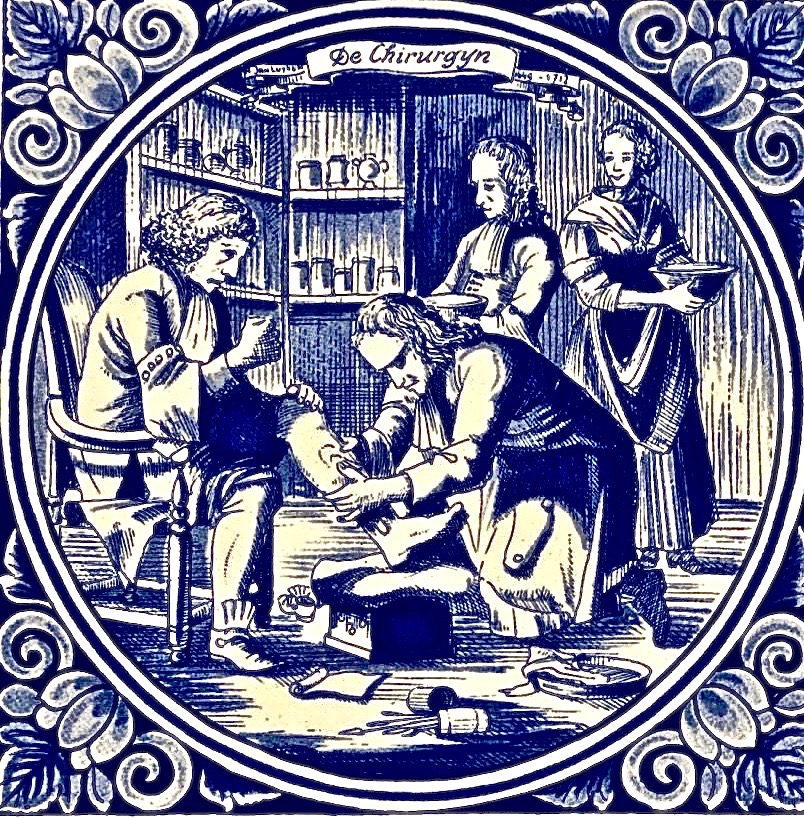
Saphenion – Gefäßmedizin im Spiegel der Kunst: Krampfaderstechen im 18. Jahrhundert. Wandkachel (im Besitz von Dr. W. Lahl)
Saphenion – vascular medicine in the mirror of art: varicose vein pricking in the 18th century. Wall tile (owned by Dr. W. Lahl)
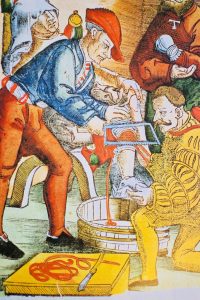
Hans Gersdorff: „Feldtbuch der Wundartzney“ (1540) – Amputation eines abgestobenen Unterschenkels (arterielle Durchblutungsstörung?)
Hans Gersdorff: „Feldtbuch der Wundartzney“ (1540) – amputation of a lower leg (arterial circulatory disorder?)
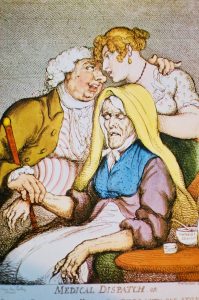
Thomas Rowlandsons Karikatur des Arztberufes (um 1800)
Thomas Rowlandson’s caricature of the medical profession (around 1800)
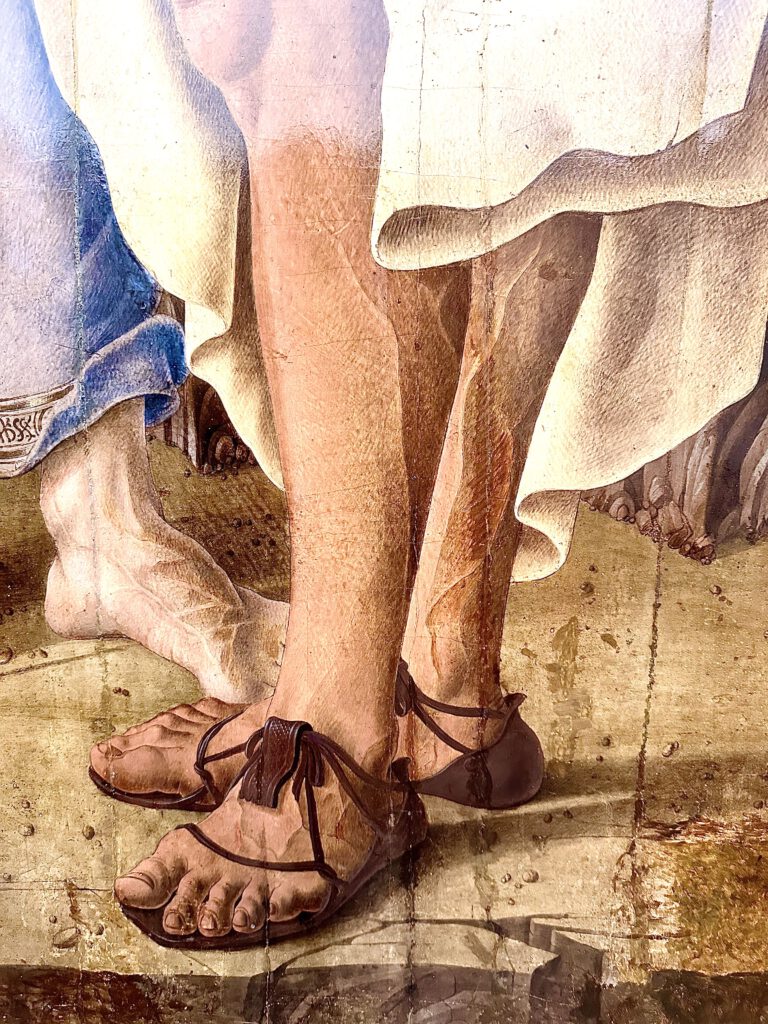
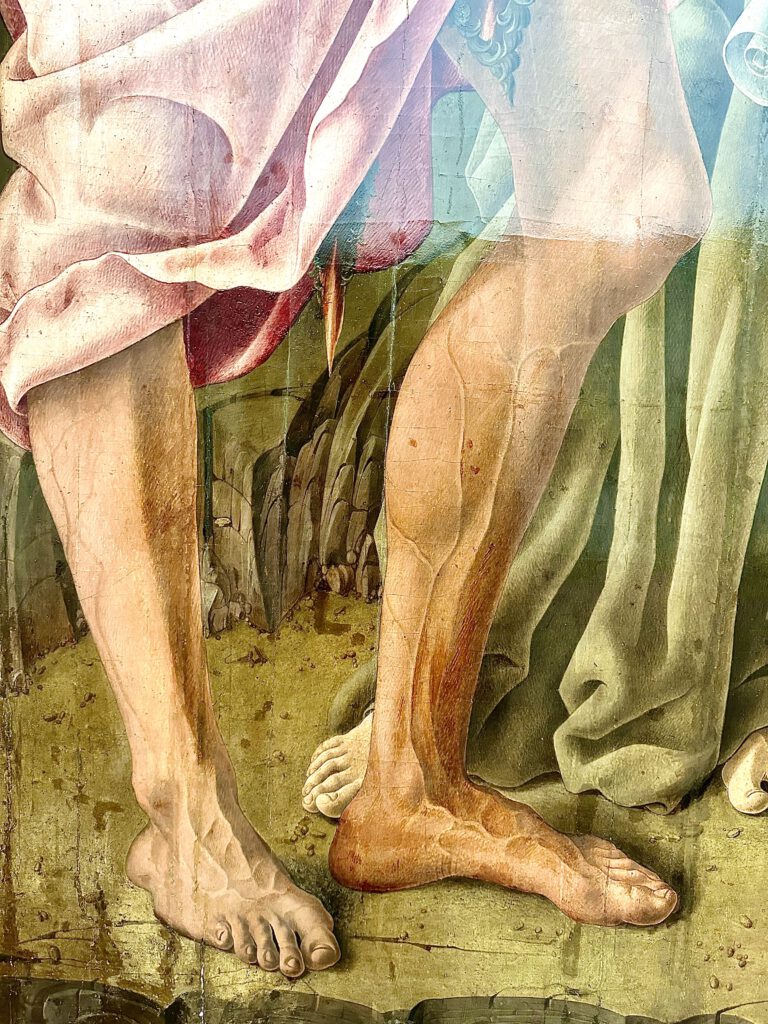
Die Krampfadern des Heiligen Matthäus und des Heiligen Hieronymus auf einem italienischen Gemälde 1630
The varicose veins of St. Matthew and St. Jerome in an Italian painting from 1630
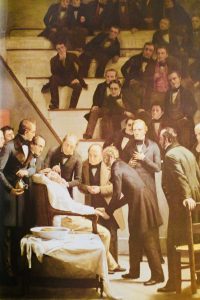
Robert Hinckley: Erste öffentliche OP unter Narkose – es wurde an den Halsvenen operiert (1882).
Robert Hinckley: First public operation under anesthesia – it was operated on the neck veins (1882).

Zeichnung von Rudolf Schlechter 1920 – Die Gesundbeter
Aus dem Bildband: Georges Grosz, Berlin – New York
Drawing by Rudolf Schlechter 1920 – Die Gesundbeter From the illustrated book: Georges Grosz, Berlin – New York
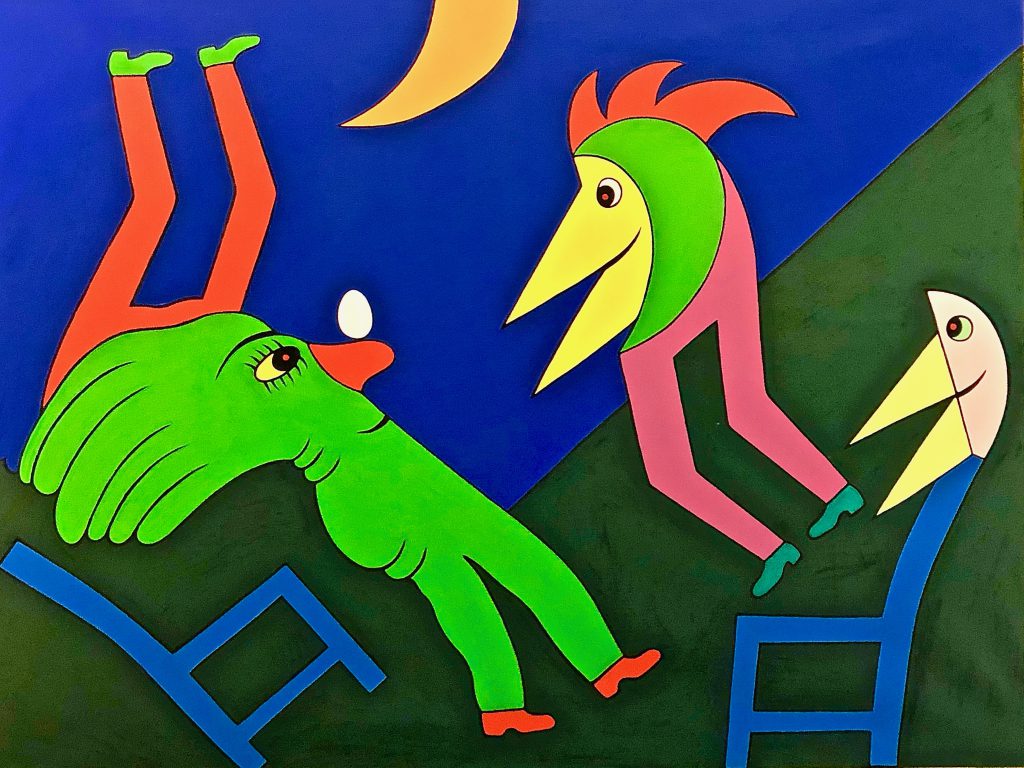
Gustavo (* 1939 in Cartagena, Spanien) ist der Künstlername des spanischen Malers Gustavo Peñalver Vico. Der Künstler lebt und arbeitet auf seinem Landsitz bei Capdepera auf Mallorca. Im Jahre 2003 malte er für Saphenion das Gemälde „Ein Gefäßchirurg vom Checkpoint Charlie operiert einem Abgeordneten beide Krampfadern mit Schuhen“.
Gustavo (* 1939 in Cartagena, Spain) is the stage name of the Spanish painter Gustavo Peñalver Vico. The artist lives and works in his country house near Capdepera in Mallorca. In 2003 he painted for Saphenion the painting „A vascular surgeon from Checkpoint Charlie operates both varicose veins with shoes for a member of parliament“.
Saphenion®Rostock: Gefäßmedizin in der Kunst – Gefäßmedizin neu gemalt
In den letzten Jahren durften wir eine liebe Künstlerin aus Mecklenburg, genauer gesagt, aus Schwaan bei Rostock kennen lernen. Unsere Frage nach künstlerischer Umsetzung gefäßmedizinischer Techniken und Portraits von bekannten Gefäßchirurgen und Chirurgen mit gefäßmedizinscher Bekanntheit, setzte sie mit einer sehr grossen Leidenschaft und Intensität um!
Das reichte sogar bis zum Studium von modernen gefäßchirurgischen Techniken und den überaus eindrucksvollen Wandlungen in der Krampfadermedizin in Fachbüchern und Fachvideos und der aktiven Beteiligunmg an Patientengesprächen und dem Zuschauen im Op-Saal.
Und wir sind sehr beeindruckt von der künstlerischen Umsetzung unserer gemeinsamen Ideen und bedanken uns sehr bei Sylva Tkotsch aus Schwaan!
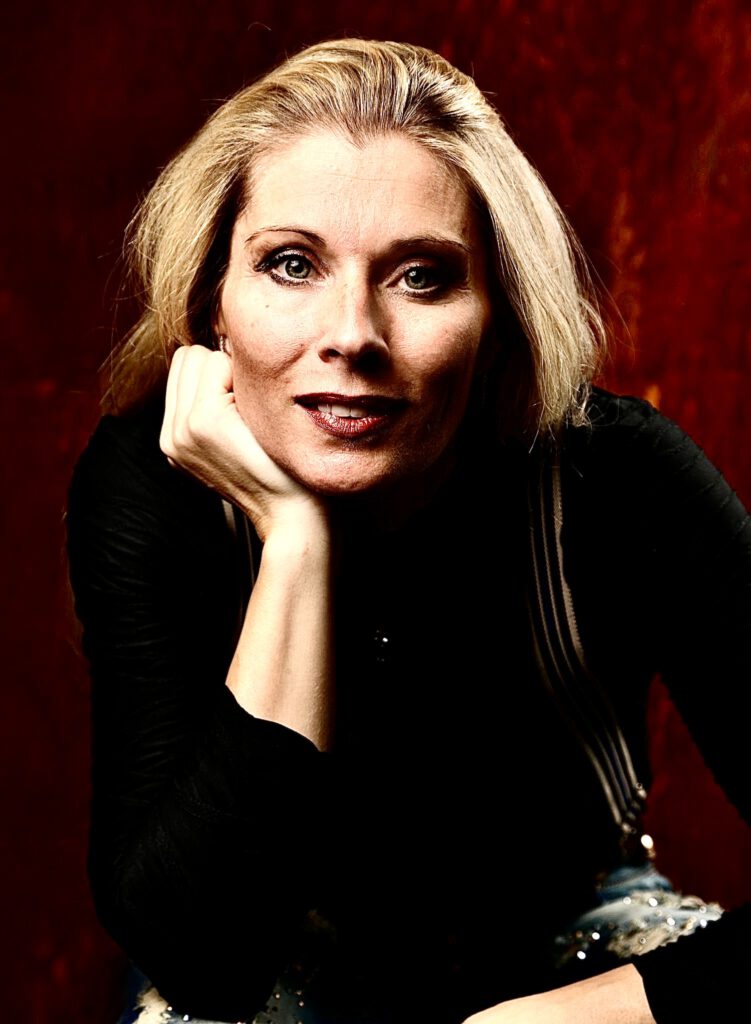
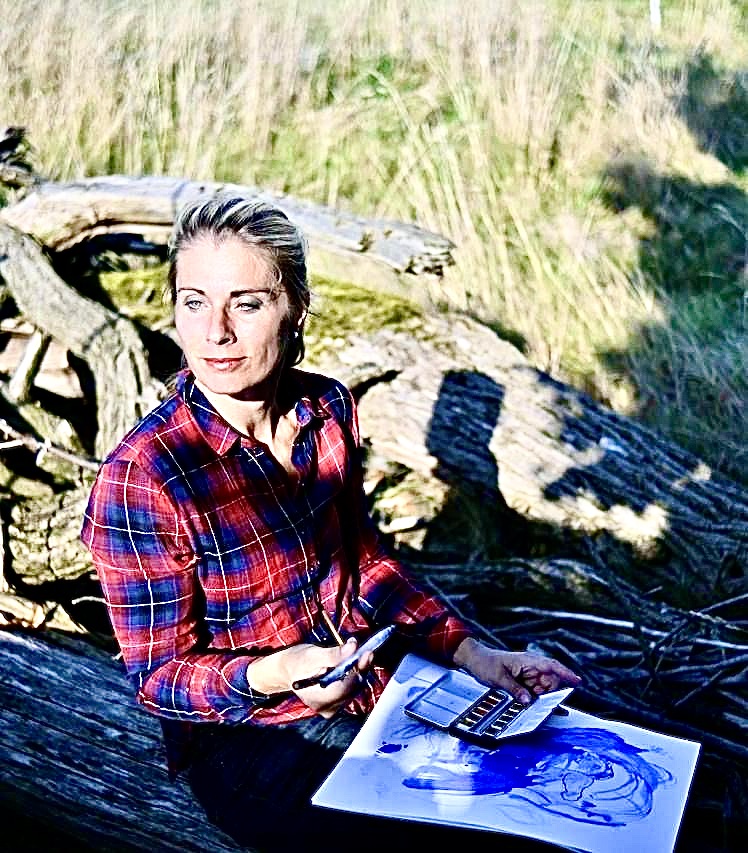
Saphenion®Rostock: Gefäßmedizin in der Kunst – Sylva Tkotsch, eine Malerin und Graphikerin aus Schwaan bei Rostock beschäftigt sich intensiv mit der künstlerischen Umsetzung von Gefäßmedizin und berühmten Gefäßmedizinern
Saphenion®Rostock: Vascular medicine in art – Sylva Tkotsch, a painter and graphic artist from Schwaan near Rostock, is intensively involved in the artistic realization of vascular medicine and famous vascular physicians
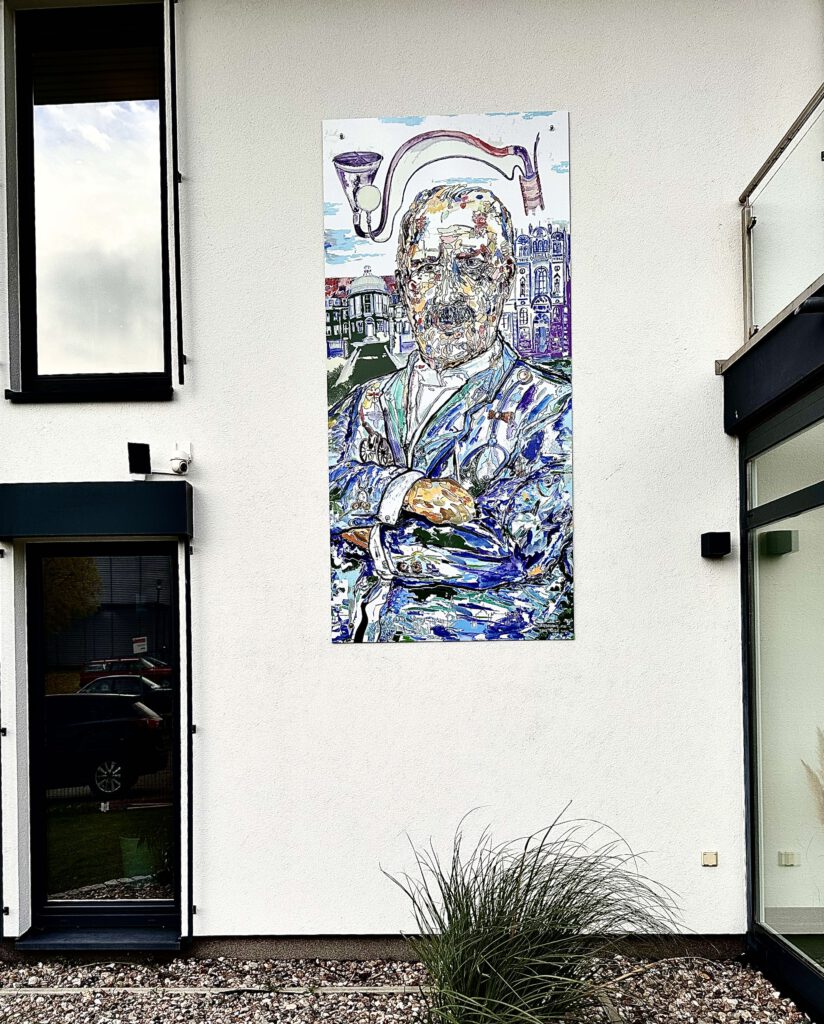
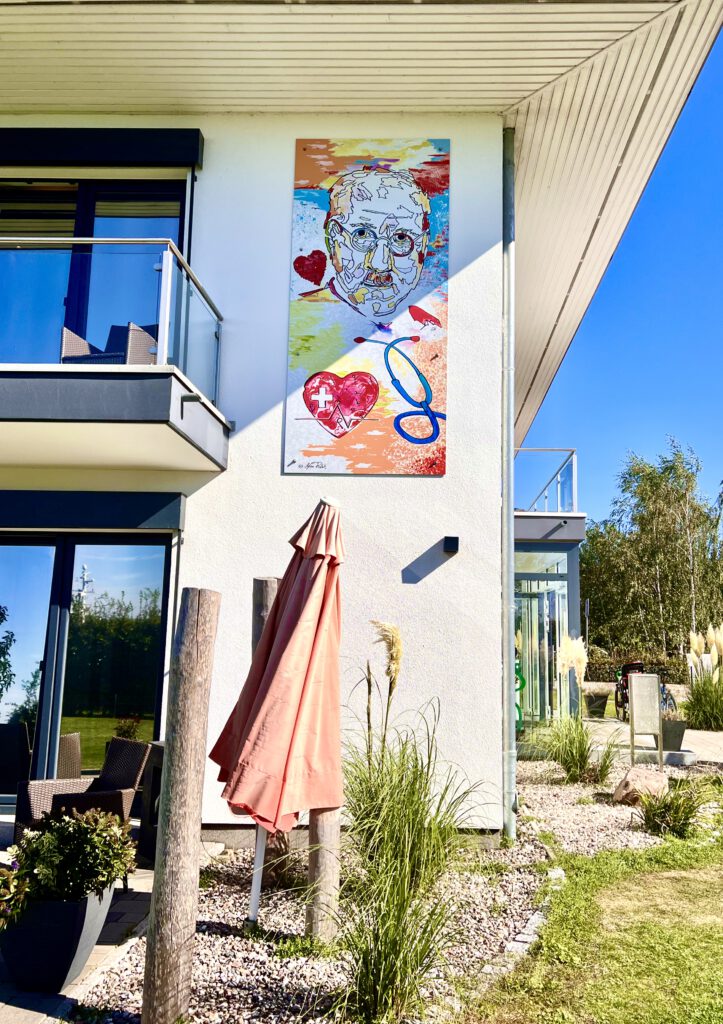
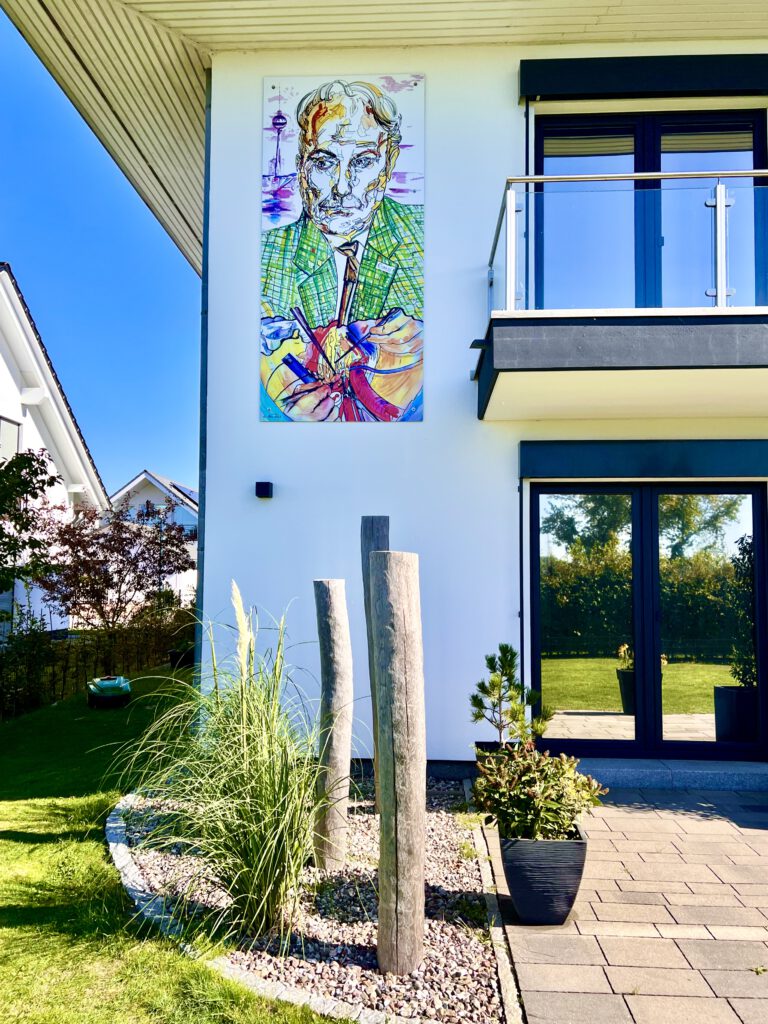
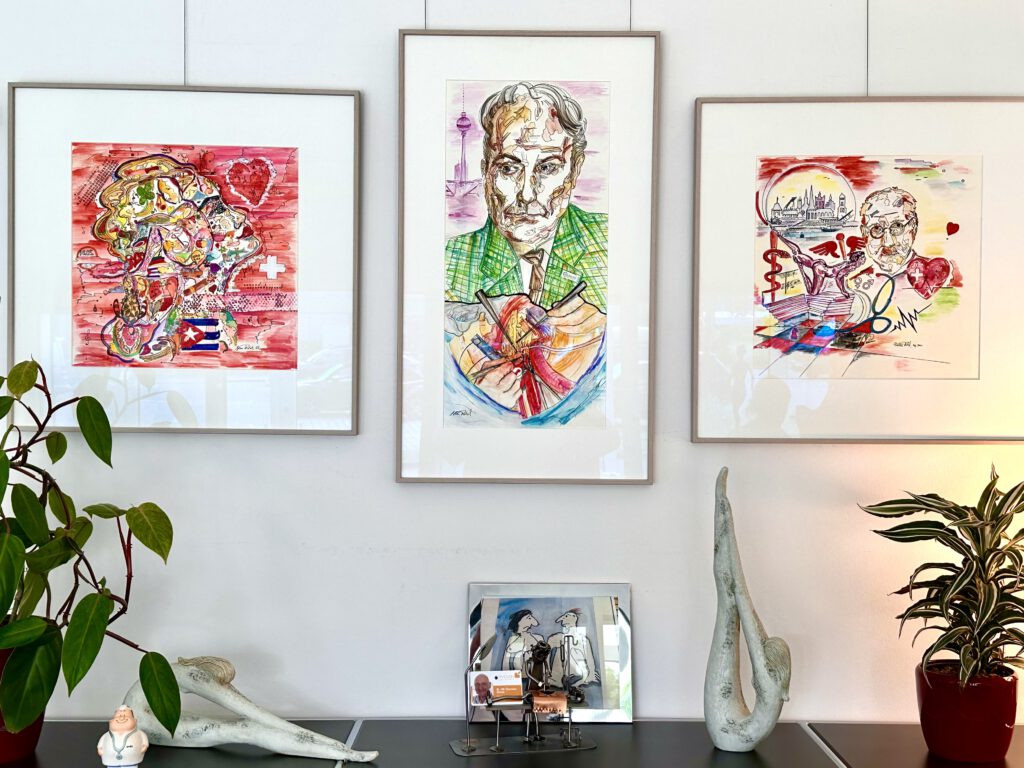
Saphenion®Rostock: Vascular medicine in art – vascular medicine repainted
In recent years, we have had the pleasure of getting to know a lovely artist from Mecklenburg, more precisely from Schwaan near Rostock. She realized our request for artistic implementation of vascular medical techniques and portraits of well-known vascular surgeons and surgeons with a reputation for vascular medicine with great passion and intensity.
This even extended to studying modern vascular surgery techniques and the extremely impressive changes in varicose vein medicine in specialist books and videos and actively participating in patient consultations and watching in the operating theater.
And we are very impressed by the artistic realization of our joint ideas and would like to thank Sylva Tkotsch from Schwaan!
Saphenion®Rostock: Gefäßmedizin in der Kunst – Dank an Professor Klaus Bürger (1933 – 2007)
Mein Dank gilt meinem gefäßchirurgischen Lehrer an der Berliner Charité, Hern Prof. Klaus Bürger. Er betreute sowohl meine Diplomarbeit als auch meine Promotionsarbeit.
In den ersten Jahren nach 1990 zog es uns bei Kongressbesuchen auch gemeinsam in Galerien und Antiquitätenläden, um „Medizin in der Kunst“ zu suchen.
Zur Eröffnung meiner Praxis SAPHENION im Februar 1997 schenkte er mir das Buch: „Die Geschichte der Medizin im Spiegel der Kunst“ von Albert S. Lyons und R. Joseph Petrucelli, erschienen in der deutschen Erstausgabe 1980 bei Du Mont Buchverlag Köln.
Dies ist mir immer wieder Anlass, über die Einflussfaktoren und die Veränderungen ärztlicher Ethik in den vergangenen Jahren und der Gegenwart nach zu denken…
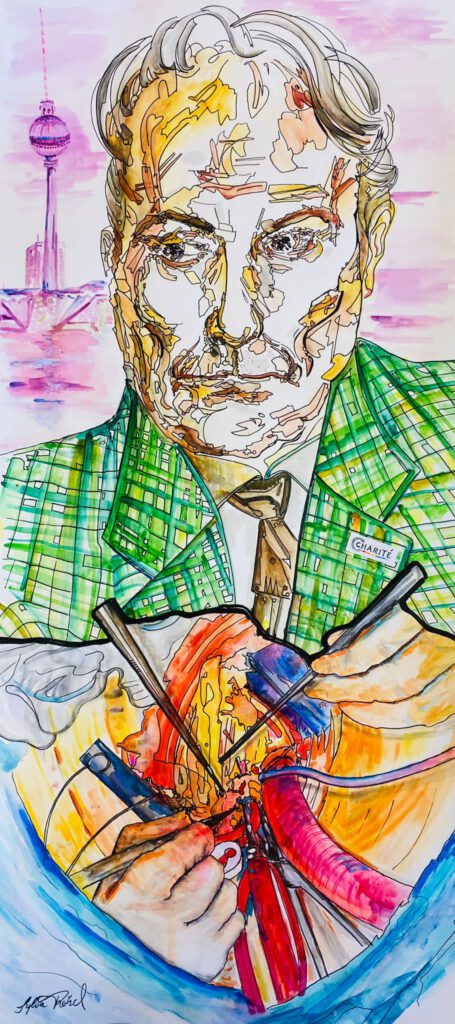
Vascular medicine in the mirror of art – thanks to Professor Klaus Bürger (1933 – 2007)
I would like to thank my vascular surgery teacher at the Berlin Charité, Hern Prof. Klaus Bürger. He supervised both my diploma thesis and my doctoral thesis.
In the first years after 1990, when visiting congresses, we were also drawn to galleries and antique shops to look for „Medicine in Art“.
At the opening of my SAPHENION practice in February 1997, he gave me the book: „The History of Medicine in the Mirror of Art“ by Albert S. Lyons and R. Joseph Petrucelli II, published in the German first edition in 1980 by Du Mont Buchverlag Cologne.
This is always an occasion for me to reflect on the influencing factors and the changes in medical ethics in the past years and the present…
Saphenion®Rostock: Gefäßmedizin in der Kunst – Andreas Pasternak und seine Musikerkollegen waren schon häufig mit grosser Freude und viel Engagement Gäste bei unseren Wartezimmer – Konzerten in der Rostocker Praxis
Saphenion®Rostock: Vascular medicine in art – Andreas Pasternak and his musician colleagues have often been guests at our waiting room concerts in the Rostock practice with great pleasure and commitment.
Fotos / Video: Utzius
Links / Artikel:
Lyons, AS et Petrucelli RJ: Die Geschichte der Medizin im Spiegel der Kunst; DuMont-Buchverlag Köln, 1980
Grosz, George: Berlin; New York; Nationalgalerie Berlin, Ars Nicolai; 1994
https://link.springer.com/article/10.1007%2Fs00772-007-0571-7
https://www.welt.de/debatte/kommentare/article12651720/Aerzte-zwischen-Kunst-und-Wissenschaft.html
